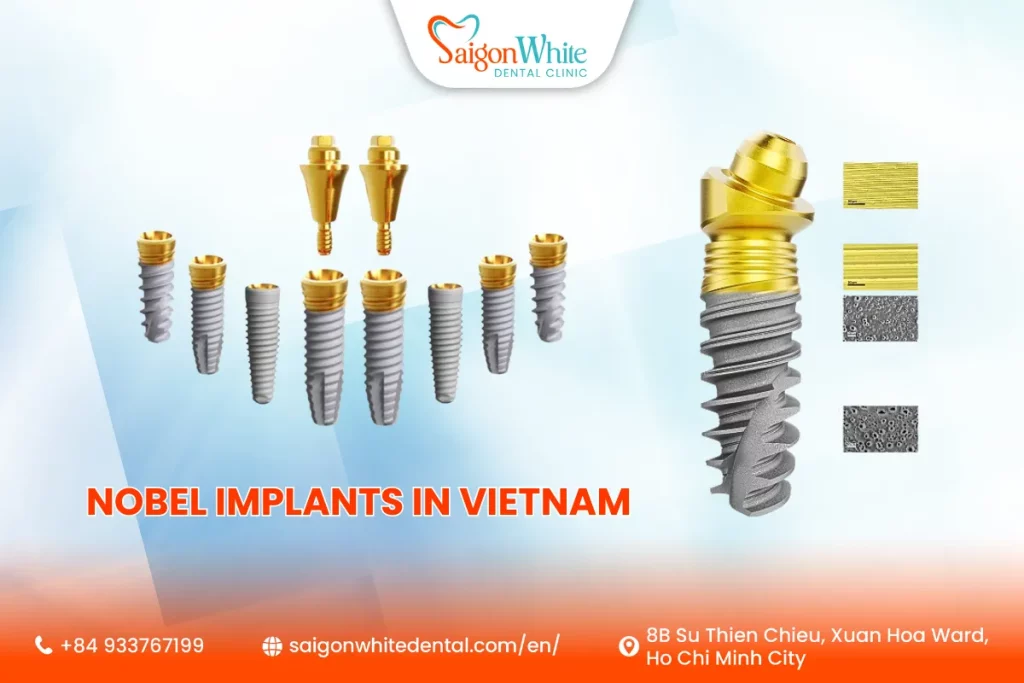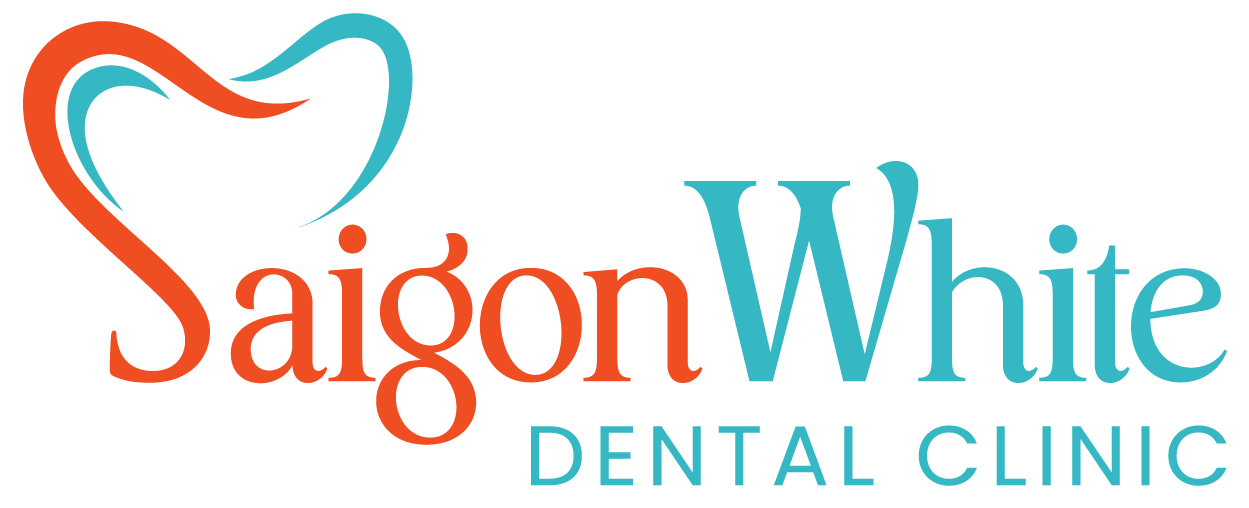In Vietnam, Nobel Biocare is one of the leading names in dental implants, standing out for its reputation, innovation, and proven track record of transforming smiles.
Nobel implants are widely recognized as premium solutions, often chosen by top specialists for patients seeking durability, aesthetics, and long-term reliability.

This article will walk you through what Nobel implants are, their unique features, benefits, drawbacks, pricing around the world, and whether they’re the right choice for you. By the end, you’ll have a clear understanding of why Nobel implants are one of the options for Dental implants in Vietnam.
What Are Nobel Implants?
Nobel Implants are advanced dental implant systems developed by Nobel Biocare, a pioneer in modern implantology. Founded in the 1950s in Sweden by Professor Per-Ingvar Brånemark—the discoverer of osseointegration—Nobel Biocare played a groundbreaking role in the development of titanium dental implants.
Today, Nobel implants are used in over 80 countries and are trusted for both simple single-tooth replacements and complex full-mouth rehabilitations.
Types of Nobel Implants
Nobel Biocare offers several implant lines to meet different clinical needs:
- NobelActive – designed for challenging cases with soft bone or immediate loading.
- NobelReplace – versatile and widely used for standard implant cases.
- NobelParallel – ideal for predictable outcomes in straightforward cases.
- NobelZygoma – specialized implants for patients with severe bone loss, anchored in the cheekbone (zygoma).
Key Features of Nobel Implants
Nobel Biocare invests heavily in research and development, ensuring each implant integrates seamlessly with advanced technology. Some standout features include:
- TiUnite Surface Technology
- The unique porous titanium oxide surface encourages rapid and strong osseointegration.
- The unique porous titanium oxide surface encourages rapid and strong osseointegration.
- Digital Workflow Integration
- Nobel implants work seamlessly with digital tools such as 3D imaging and CAD/CAM for precision.
- Nobel implants work seamlessly with digital tools such as 3D imaging and CAD/CAM for precision.
- Prosthetic Flexibility
- A wide range of abutments and prosthetic solutions allows for highly customized, natural-looking restorations.
- A wide range of abutments and prosthetic solutions allows for highly customized, natural-looking restorations.
- Global Research & Support
- Backed by decades of clinical studies and a worldwide network of certified providers.
Benefits of Nobel Implants
Choosing Nobel implants comes with significant advantages.
1. Exceptional Success Rate
Long-term studies show that Nobel implants consistently achieve success rates above 95%, even after 10–15 years.
2. Natural-Looking Aesthetics
With customized abutments and crowns, Nobel implants provide seamless integration with surrounding teeth, making them indistinguishable from natural teeth.
3. Reliable for Complex Cases
Nobel implants are often chosen for patients with low bone density or those requiring full-mouth restorations, where precision and stability are critical.
4. Advanced Technology
The integration with digital workflows means patients benefit from faster treatment times, less invasive surgery, and more accurate results.
5. Global Trust and Warranty
As one of the most recognized implant brands worldwide, Nobel offers product warranties and peace of mind for patients investing in their smiles.
Potential Drawbacks of Nobel Implants
While Nobel implants are considered among the best, they are not without limitations.
- Higher Cost
- Nobel implants are more expensive than many other implant systems, sometimes costing 30–50% more.
- Nobel implants are more expensive than many other implant systems, sometimes costing 30–50% more.
- Limited Availability
- Only clinics with trained specialists and certification can provide Nobel implants, which may limit accessibility in some regions.
- Only clinics with trained specialists and certification can provide Nobel implants, which may limit accessibility in some regions.
- Not Always Necessary
- For straightforward cases, patients may not require a high-end implant system, and more affordable options may be sufficient.
Nobel Implants vs. Other Implant Brands
To better understand Nobel’s positioning, let’s compare it with other leading brands:
- Nobel vs. Straumann
- Both are premium brands with excellent research backing. Straumann is known for its SLActive surface, while Nobel has TiUnite.
- Both are premium brands with excellent research backing. Straumann is known for its SLActive surface, while Nobel has TiUnite.
- Nobel vs. Osstem/Dentium
- Korean brands Osstem and Dentium are more affordable and widely used in Asia, but Nobel offers stronger long-term global recognition.
- Korean brands Osstem and Dentium are more affordable and widely used in Asia, but Nobel offers stronger long-term global recognition.
- Nobel vs. Megagen/Hiossen
- Megagen and Hiossen provide cost-effective solutions and innovative implant designs, but Nobel remains more established globally.
👉 If budget allows, Nobel often provides greater assurance and longevity. However, for patients seeking affordability, other brands may be more practical.
Pricing of Nobel Implants
The cost of Nobel implants varies depending on location, clinic reputation, dentist expertise, and the complexity of the case.
Factors Influencing Price
- Number of implants required
- Bone grafting or sinus lift needs
- Type of prosthetics (crown, bridge, denture)
- Clinic’s location and technology used
Average Nobel Implant Costs by Region
- United States: $4,000 – $6,000 per implant
- Australia: AUD 4,500 – AUD 6,500 per implant
- Europe (UK/Germany): €2,500 – €4,000 per implant
- Vietnam: $1,200 – $2,000 per implant
In destinations like Vietnam or Thailand, Nobel implants are significantly more affordable, making them attractive options for dental tourism.
Cost vs. Value
Although Nobel implants carry a higher upfront cost, their durability, aesthetics, and long-term reliability often make them more cost-effective in the long run.
Who Is a Good Candidate for Nobel Implants?
Nobel implants are ideal for:
- Patients missing one or more teeth who want a premium and reliable solution.
- Individuals with bone loss require advanced implant solutions.
- Patients seeking full-mouth restoration with All-on-4 or All-on-6 solutions.
- Anyone prioritizing long-term aesthetics and durability.
Contraindications may include uncontrolled diabetes, smoking, or severe gum disease, which should be assessed by a qualified dentist.
Nobel Implants Procedure Step by Step
1. Initial Consultation
- Digital scans and 3D imaging to plan implant placement.
2. Surgical Placement
- Titanium implant post inserted into the jawbone under local anesthesia.
3. Healing & Osseointegration
- A period of 3–6 months allows the implant to fuse with the bone.
4. Abutment Placement
- The connector piece (abutment) is attached to the implant.
5. Crown or Prosthetic Attachment
- A custom-made crown, bridge, or denture is placed for a natural finish.
6. Aftercare
- Patients receive instructions for oral hygiene and regular follow-ups to ensure implant longevity.
Common Questions About Nobel Implants (FAQs)
1. How long do Nobel implants last?
With proper care, Nobel implants can last 20+ years, and many patients keep them for life.
2. Are Nobel implants worth the price?
Yes, especially for patients who value premium quality, natural aesthetics, and long-term reliability.
3. Is the procedure painful?
Most patients report minimal discomfort thanks to local anesthesia and modern techniques.
4. How soon can I eat normally?
Soft foods are recommended during healing, but most patients return to normal eating within a few weeks.
5. Do Nobel implants come with a warranty?
Yes, Nobel Biocare offers product warranties, adding extra peace of mind.

 Telegram
Telegram